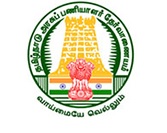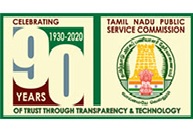TNPSC Fisheries Science Exam Syllabus : Tamil Nadu Public Service Commission
Organisation : Tamil Nadu Public Service Commission (TNPSC)
Exam Name : TNPSC Fisheries Science Examination
Standard : PG Degree Standard
Subject Code : 329
Announcement : TNPSC Fisheries Science Exam Syllabus
Website : https://www.tnpsc.gov.in/English/new_syllabus.html
TNPSC Fisheries Science Exam Syllabus
TNPSC Fisheries Science Exam Syllabus are given below,
Related / Similar Syllabus : TNPSC Forestry Exam Syllabus

UNIT- I: Fish Taxonomy, Anatomy, Biology, Capture Fisheries, Fish Stock Assessment & Population Dynamics
Systematics – Commercially important aquatic fauna and flora – marine plants, corals, crustaceans, molluscs, echinoderms, finfishes, turtles and marine mammals – external morphology – Biochemical taxonomy – Anatomy of finfish, shrimps, crabs, bivalves, gastropods and cephalopods – circulatory, respiratory, nerves, urinogenital, endocrine and skeletal systems- sensory organs- reproductive biology, maturity stages, gonodo somatic index, ponderal index, fecundity, sex ratio and spawning – eggs and larval stages and developmental biology -Fish biology – food and feeding habits – age and growth length/weight relationship – reproduction, maturation, breeding, spawning, fecundity, eggs and larvae and development – fish physiology, functions of different organ systems of finfish and shellfish- GIS and remote sensing in marine capture Fisheries, Fisheries laws and legislation ;Fisheries resources – important capture fisheries of the world, India, Tamil Nadu – Distribution, population dynamics, stock assessment, modeling, MSY, MEY – conservation of aquatic organisms – endangered aquatic animals and their conservation migration of fishes.
UNIT-II: Inland Aquaculture, Coastal Aquaculture Mariculture & Aquaculture Engineering
Freshwater aquaculture – site selection – construction of fish farms – cultivable species, corps, tilapia, murrel, catfish, freshwater prawn – culture techniques, monoculture, composite fish culture, – pre-stocking and post/stocking management – integrated fish farming – polyculture – sewage – fed fish culture – Role of cage and pen culture in enhancement of fish production from reservoirs – principles of organic cycling & detritus food chain,- use of agro – industrial waste & biofertilizer in aquaculture – cultivation of aquatic macrophytes in aquaculture – ornamental fish culture and breeding techniques of live bearers -barbs, gold fish, tetras, cichlids, Gouramis, fighter fishes and indigenous ornamental fishes – water recirculation system – commercial fish feed formulation, feeding methods – Fish food organisms – green algae, blue green algae, spirulina, diatoms, infusoria, rotifers, cladocerans, tubifex, artemia & earthworms; Coastal aquaculture- site selection – construction of fish farm – cultivable species, finfish- seabass, mullet, milk fish, grouper, cobia, snappers, Ayu, pearl spot; shellfish – tiger shrimp, white shrimp, mud crab, lobster, mussel, oyster, clam; seaweeds – culture techniques – cages and pens – Management of coastal aquaculture farms – sea ranching; Mariculture -open water cages- candidate species for mariculture; Aquaculture Engineering- land survey, survey equipments-types of dykes- types of ponds-types of canals-aerators – pumps.
UNIT-III: Fish Genetics, Fish Biotechnology, Fish Pathology & Aquatic Health Management
Modern trends in fish genetics – hybridization cryopreservation of fish gametes – pleiotropism, lethal genes- mutation-sex linked genes-chromosomal structure – aberrations- manipulation techniques- genetically and environmentally induced abnormalities -androgenesis – gynogenesis – polyploidy – genetic engineering – sex reversal – cloning – transgenic fishes – sex determination – cross breeding – cryopreservation of gametes; Fish pathology – Prognosis and diagnosis – bioremediation -probiotics- importance of biofilm, biofloc and periphyton in aquatic health management prophylactic measures – Molecular and immunological Techniques; Pharmacology- Drugs – principles of drugs action – adverse drugs effect – anti bacterial agents – antibiotics – antiseptics and disinfectants parasites – bacterial, fungal and viral diseases – therapeutants in aquaculture -pesticides, fungicides, algicides, hormones, anesthetics, flesh colour enhancer; Fish toxicology- phytotoxins -myco toxins – maximum residual limits; Fish immunology- antigens antibody interactions, defense mechanisms in fin fish and shell fish- vaccine development – whole cell vaccine – purified macro molecules -DNA vaccines- immuno – stimulants – ELISA.

UNIT- IV: Fish Hatchery Management
Brood stock management of finfish and shellfish –induced breeding – hypophysation of fishes – fish pituitary glands in breeding technique – synthetic hormones – sexual maturity and breeding season of different species – breeding techniques for IMC, exotic craps, mahaseers, trouts, tilapia, catfishes, grey mullets, milk fish, pearl spot,
Download Syllabus
TNPSC Fisheries Science Exam Syllabus Link :
http://www.syllabus.gen.in/uploads/pdf2022/2903-syllabus.pdf